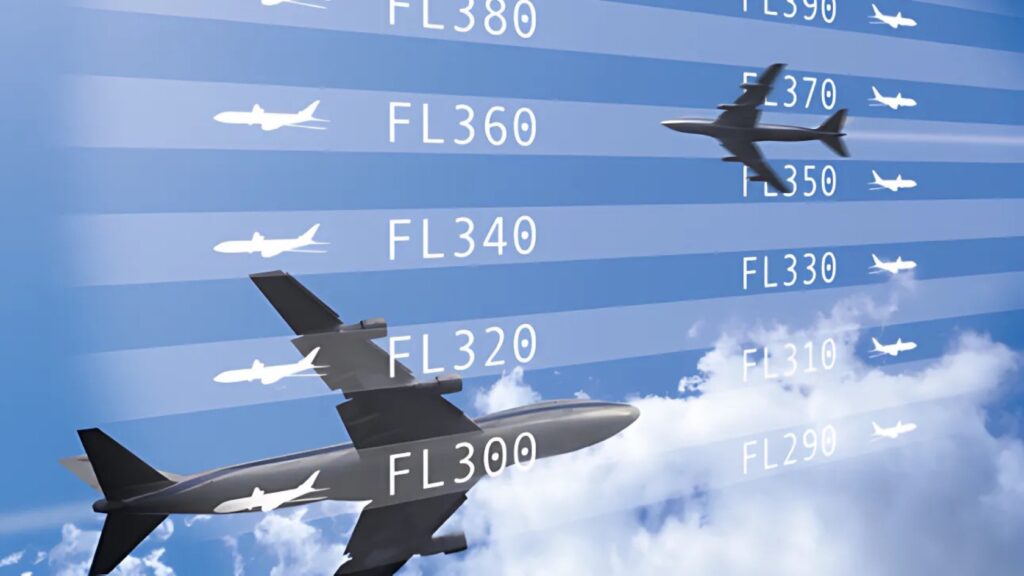Reduced Vertical Separation Minimum (RVSM) is a fundamental concept in modern aviation. It refers to the reduction of the required vertical separation between two aircraft, decreasing from the traditional 2,000 feet (600 meters) to 1,000 feet (300 meters) in specific segments of airspace—specifically between flight levels FL290 and FL410 (29,000 to 41,000 feet).
Origins and Historical Evolution
During the 1940s, the vertical separation between aircraft was set at 1,000 feet; in some special cases, 500 feet were applied when specific safety conditions were met. With the advent of commercial jet aircraft capable of operating at much higher altitudes, it became necessary to re-evaluate this regulation in order to optimize airspace usage without compromising safety.
In June 1954, the International Civil Aviation Organization (ICAO) established the Vertical Separation Expert Group. This group defined the following guideline:
“The minimum vertical separation for IFR traffic shall be a nominal distance of 1,000 feet below an altitude of 29,000 feet (flight level 290) and a nominal distance of 2,000 feet at or above that level, except where, based on regional air navigation agreements, a lower level is stipulated for the change to a nominal minimum vertical separation of 2,000 feet.”
RVSM Implementation and Approval
Approval to operate under RVSM is granted by the competent authority of the state where the operator is based or where the aircraft is registered. To obtain RVSM approval, operators must ensure that:
- Technical Capability: The aircraft possesses the necessary vertical navigation capabilities to operate according to the RVSM Specification criteria (MASPS).
- Maintenance Procedures: Rigorous procedures and continuous airworthiness programs—covering maintenance and repair—have been established.
- Crew Training: Specific procedures for crew training and operations in RVSM airspace, especially in the CAR/SAM regions, are in place.
It is important to note that RVSM approval is not restricted to a specific geographical region; it is valid worldwide. However, any region-specific operational procedures, such as those for the CAR/SAM zones, should be incorporated into the Operations Manual or the appropriate crew training guide.
RVSM Benefits in Modern Aviation
The implementation of RVSM has enabled more efficient use of airspace. By reducing the vertical separation between aircraft, flight routes are optimized, and airspace capacity is increased without compromising safety. This advancement not only enhances the operational efficiency of airlines but also positively impacts the reduction of waiting times and fuel consumption, thereby contributing to more environmentally friendly and economical operations.
Both the Federal Aviation Administration (FAA) and the European Union Aviation Safety Agency (EASA), along with the authorities of the ICAO contracting states, are required to adhere to the recommendations established in Annex 6, Part I. These guidelines are further detailed and expanded in ICAO’s Document 7030, which remains a key reference for ensuring safety and efficiency in RVSM operations.

